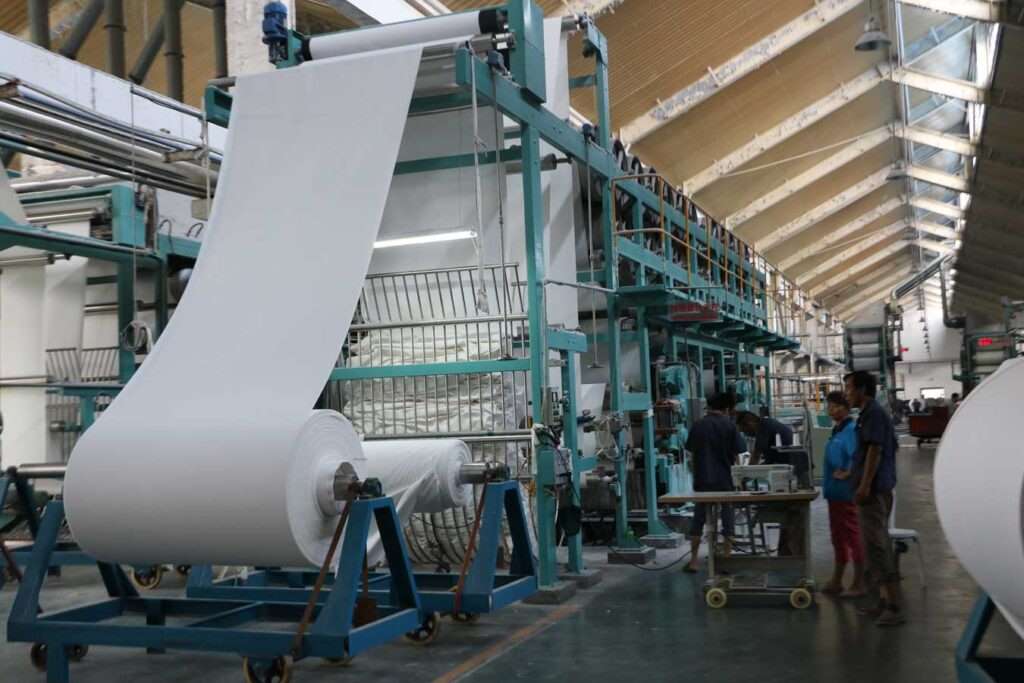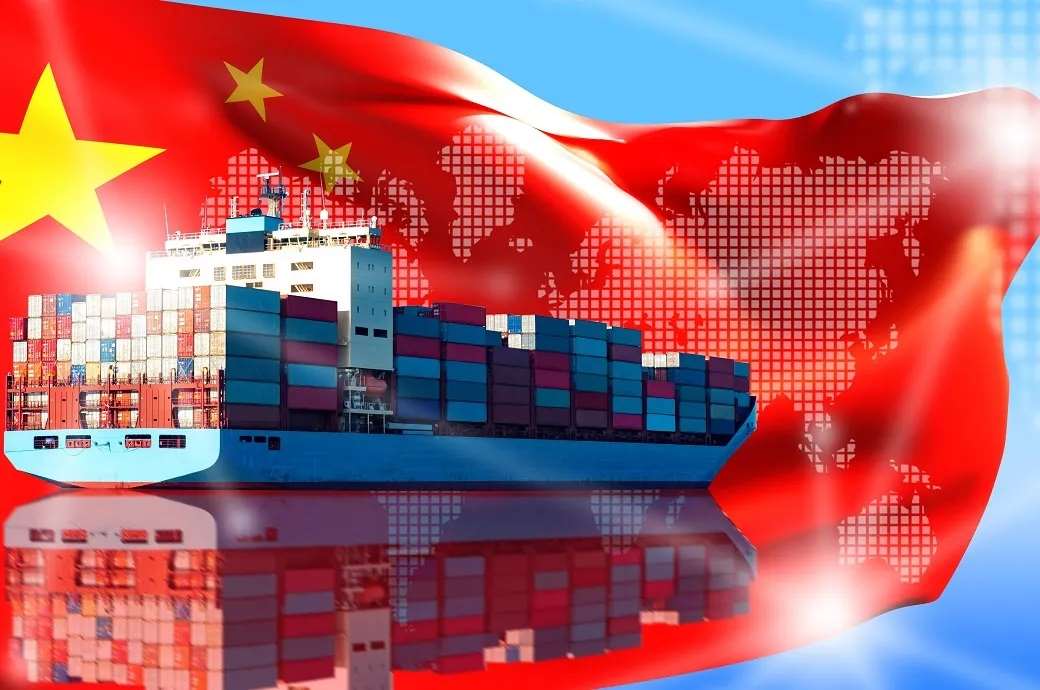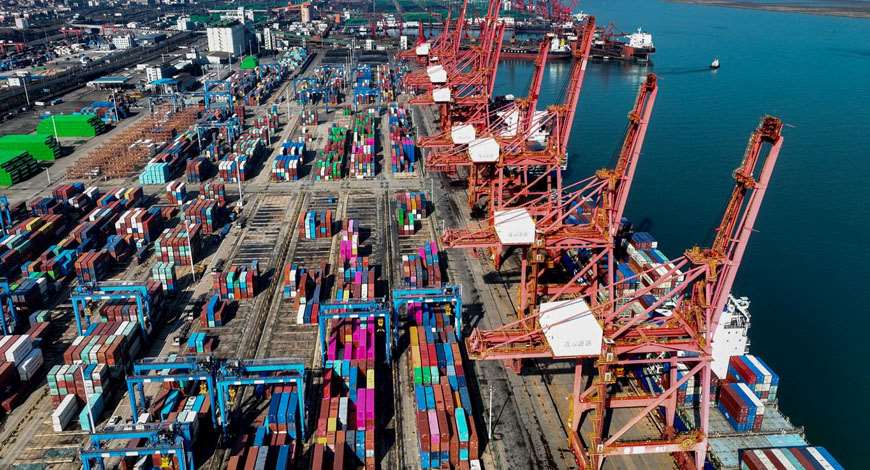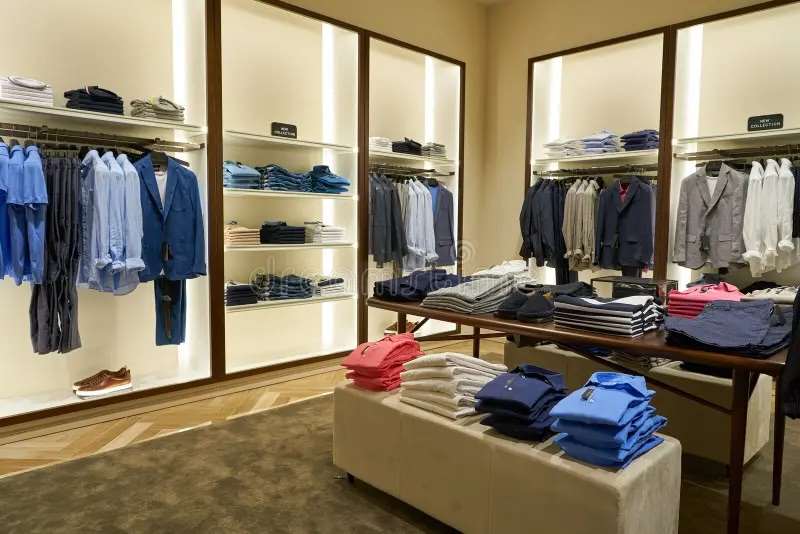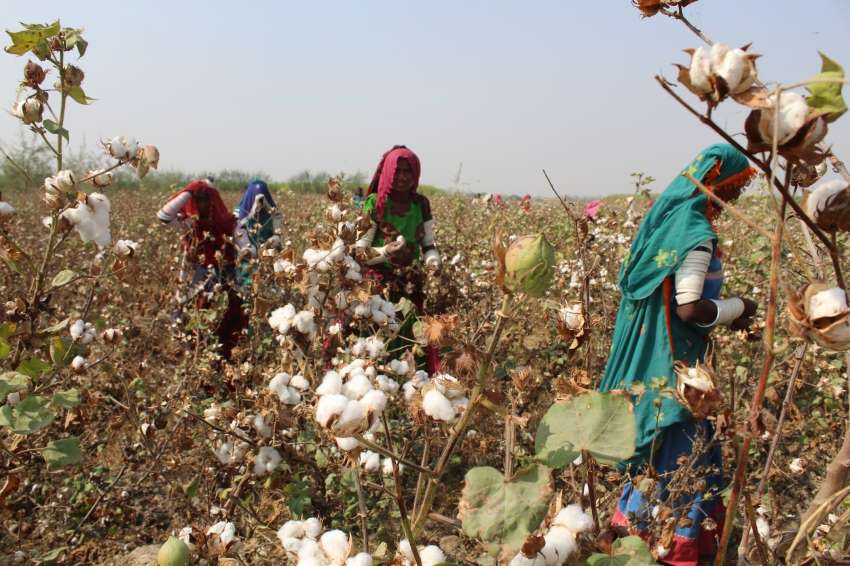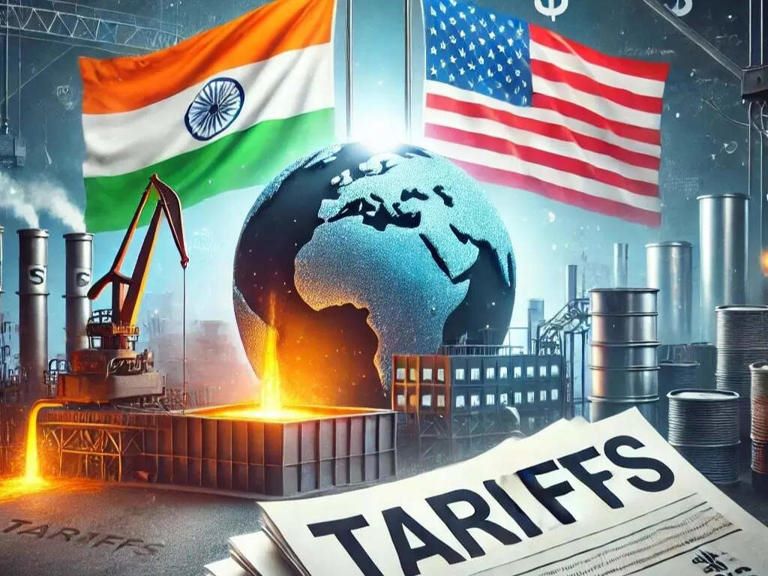FW
South African upscale retailer Woolworths Holdings reported a 24.8 per cent decline in H1, FY25 profits, as sales in its apparel divisions across South Africa, Australia and New Zealand remained below expectations.
The company’s profitability was impacted by a lower-than-expected revenue growth in its clothing businesses, along with pressure on gross profit margins and increased operating expenses due to its transformation initiatives. Its adjusted earnings before interest and taxes (EBIT) contracted by 13.7 per cent to 2.8 billion South African rand ($151.62 million USD).
The group’s fashion, beauty, and home sales in South Africa increased by only 2.5 per cent, while in Australia and New Zealand, where the company owns the Country Road fashion chain, sales declined by 6.2 per cent.
This financial report highlights the challenges faced by retailers in navigating fluctuating consumer demand and the impact of strategic transformation initiatives on short-term profitability.
Making a highly anticipated return to ready-to-wear, Viktor & Rolf are launching their Fall/Winter 2025 collection, infusing their signature avant-garde couture aesthetic into practical, everyday fashion.
Inspired by their ‘Haute Abstraction; Fall/Winter 2024 Haute Couture collection, the designers are transforming dramatic high-fashion elements into wearable silhouettes. Defined by sharp tailoring, distinct detailing, and rich textures, the collection seamlessly blends structured precision with everyday essentials like denim and is being developed in collaboration with heritage outerwear brand Mackintosh.
The collection incorporates intricate couture details, such as delicate tulle ruffles, into garment pieces like jeans and jackets, adding sculptural volume and elevating wardrobe staples. A few of standout items of this collection include tailored balloon trousers crafted from Japanese tuxedo wool and a relaxed denim variation.
The color palette of the collection transitions from deep, moody tones of black, grey, and dark berry to lighter accents of white, mint, and sky-blue denim. The daywear features a classic beige hue, ‘golden fawn,’ reinforcing Viktor & Rolf's commitment to timeless wardrobe essentials.
The collection blends Italian silk satin with Japanese tuxedo wool, silk-viscose floral jacquard, mohair, superfine alpaca knits, and organic cotton denim. Its layered, duplicated, and deconstructed elements echo signature techniques from Viktor & Rolf's archival collections, including Spring/Summer 2002's ‘White’ and Fall/Winter 2003's ‘One Woman Show.’
The collection launches with a campaign captured by Alessandro Furchino Capria, unfolding against the backdrop of Paris streets.
Tonello is transforming industrial drying with its first in-house-developed dryer range, enhancing efficiency, quality, and sustainability in garment treatment.
The new lineup includes eight models catering to various production scales, from sampling to high-volume manufacturing. Features like a touchscreen display, temperature sensors for precision control, and an enlarged transparent door improve usability.
The wide-diameter drum ensures even garment distribution and faster drying. Models range from manual-door versions for sampling to automated tilting and dual-door designs for seamless workflow integration.
Tonello prioritizes energy efficiency with high-permeability drums for faster drying, enhanced airflow to reduce consumption, and an inverter-controlled transmission for optimized processes.
All models are Heat Pump Ready, enabling significant energy savings and emission reductions. Additional options like ThermoShell insulation and SmartDry heat recovery further boost efficiency, with SmartDry delivering over 20 per cent steam savings in larger models.
Tonello’s intelligent software simplifies operations with real-time monitoring, a Program Editor for customized settings, and digital tools like Metro for centralized tracking, Guardian for predictive maintenance, and Mago Site Manager for remote support.
By combining advanced technology with sustainable innovation, Tonello’s dryers set new standards in industrial garment care, reducing costs, energy use, and environmental impact.
Knitwear exports from Tiruppur are projected to surpass Rs 40,000 crore in FY25, alongside Rs 27,000 crore in domestic sales, says A Satkthivel, Vice President, Apparel Export Promotion Council and Founder, Tiruppur Exporters Association (TEA).
Accounting for 54 per cent of India’s knitwear exports, Tiruppur continue to capitalize on shifting global trade dynamics despite past challenges from COVID-19, demonetization, GST, and global economic slowdowns, adds Sakthivel. The US-China trade war and unrest in Bangladesh are creating new opportunities for Tiruppur's exporters, he states further.
The expiration of Bangladesh's EU FTA in 2027 further enhances Tiruppur's prospects. Currently, Tiruppur exports 35 per cent of its production to the EU, 35 per cent to the US, and 10 per cent to the Middle East and Canada. Bangladesh's FTA advantage allows them to supply goods 10.5 per cent cheaper than India.
India's ongoing FTAs with the UK and EU, and those signed with Australia and the UAE, will benefit Tiruppur. If the UK and EU negotiations succeed and Bangladesh's EU FTA expires, India’s growth is likely to reach 35-40 per cent annually, affirms Sakthivel
Currently ranked sixth in global garment exports with a 3.9 per cent market share, India trails Bangladesh's 12 per cent. Its key competitors include Vietnam, Cambodia, Sri Lanka, and Taiwan. China dominates with a 36 per cent share, plus indirect exports, according to Kumar Duraisamy, Joint Secretary, TEA.
Tiruppur's focus on adapting to global trade shifts and securing advantageous FTAs positions it for substantial future growth in the competitive apparel export market.
Salvatore Ferragamo registered a significant declined in adjusted operating profits in 2024, with earnings more than halved, as the Italian luxury leather goods group navigates leadership changes and market headwinds.
The Group’s adjusted earnings before interest and taxes (EBIT) declined to €35 million, surpassing analysts' consensus expectations, which were around €30 million. In 2023, the comparable figure was €79 million.
The group reported a net loss of €68 million in 2024, a stark contrast to the €26 million profit recorded the previous year.
Ferragamo's revenues declined by 4 per cent at constant currencies in Q4, FY24. The company attributed this sharp decline to a slowdown in Asian markets, particularly in China, and a challenging global wholesale environment, according to its recent earnings statement.
However, despite these challenges, the company highlighted ‘encouraging results’ from its direct-to-consumer sales, which remained flat overall in the last three months of the year.
Marco Gobbetti, CEO stepped down after a three-year tenure marked by persistent sales declines at the Florentine brand. A former CEO with Burberry, Gobbetti failed to reverse the company's downward trend.
Leonardo Ferragamo, Chairman announced full support to designer Maximilian Davis, appointed creative director in 2022. The chairman also reaffirmed the Ferragamo family's commitment to the company.
Sustainable fashion experts from Royal Melbourne Institute of Technology (RMIT) have partnered with leading brands to create comprehensive guidelines aimed at eliminating wasteful design practices and promoting durable fashion that supports reuse and recycling.
Addressing the global fashion industry's significant contribution to greenhouse gas emissions (approximately 10 per cent), the new guide, ‘Refashioning: accelerating circular product design at scale,’ outlines practical steps for makers to transition from a linear to a circular design model. This shift focuses on maximizing the lifespan of products and materials.
Professor Alice Payne, Dean, RMIT's School of Fashion and Textiles and Project Lead, emphasizes, the guide challenges traditional design thinking with actionable steps for change. It provides a systematic approach to implementing circular clothing design that all organizations can adopt, regardless of size, she says, Based on extensive industry research, the institute has created practical steps to improve the circularity of their outputs. 'Refashioning' uniquely offers a systematic methodology for both slowing the flow and closing the loop, she informs.
The new guide emphasizes considering material choices, product purpose, durability, and end-of-life options early in the design process to enable material recycling.
The guide's development was a collaborative effort between RMIT, Country Road Group brands (Country Road, Trenery, Witchery, and Politix), and independent experts Courtney Holm and Julie Boulton.
Highlighting the project's success in connecting industry, government, and academia to tackle textile waste, Matt Genever, CEO, Sustainability Victoria, says, the project is a prime example of how cross-sector collaboration can deliver impactful results in the transition to a circular economy
The guidelines were rigorously tested on actual products by design teams across the Country Road Group, ensuring their practical application. Erika Martin, Head –Sustainability, Country Road Group, states, the project has fostered a common understanding and approach to circular design across their brands.
The guide was co-authored by Alice Payne, Yassie Samie, Jenny Underwood, Saniyat Islam, Rebecca Van Amber, and Regine Abos from the RMIT.
Nemo’s best-selling Dagger Osmo tent is now more spacious and sustainable, earning the Bluesign Product designation. This marks a major milestone in eco-friendly tent design, reinforcing Nemo’s commitment to clean chemistry and responsible manufacturing.
The 2025 Dagger Osmo is crafted with solution-dyed, 100 per cent recycled, PFAS- and flame-retardant-free fabrics, reducing environmental impact while maintaining high performance. Traditionally, backpacking tents rely on chemical treatments for durability, but Nemo’s Osmo fabric delivers lightweight, water-resistant, and UV-resistant performance without harmful substances.
The updated tent features a more livable interior without added weight, thanks to Nemo’s custom Elements hardware. The Axial corner anchor streamlines setup, while the Stash volumizing strut expands vestibule storage by 22 per cent. The Divvy Cube makes packing easier and more efficient for shared loads. Available in 2- and 3-person models, the Dagger Osmo weighs just 3 lbs., 5 oz (2P) and retails at $499.95.
“In 2023, our team set out to push Dagger’s sustainability further, creating the industry’s first Bluesign tent,” said Gabi Rosenbrien, Product Development Director at Nemo. “This required working closely with suppliers to meet strict performance and chemical standards.”
Daniel Rufenacht, CEO of Bluesign, praised Nemo for setting a new sustainability benchmark in outdoor gear. “By prioritizing clean chemistry, Nemo proves that performance and responsible manufacturing can go hand in hand.”
Vietnam’s textile and apparel (T&A ) exports increased by 9.3 per cent to $5.634 billion in the first two months of the fiscal year, as per a report by the General Statistics Office (GSO).
As per this report, the garment and textile exports from Vietnam to the US continue to grow with domestic enterprises having secured export orders until the second quarter of the year. The market share of these enterprises is also expected rise in the coming times.
Hoang Manh Cam, Deputy Chief, Office of the Board of Directors, Vietnam Textile and Garment Group, points out; the new tariff measures by the United States tariff are not directed towards Vietnam, which is the least vulnerable country in the ASEAN region
However, their business is expected to slow down from the third quarter of the year as customers monitor the impact of US tax policies on the economy.
Experts advise Vietnamese textile and garment enterprises to enhance compliance with origin regulations under the Uyghur Forced Labor Prevention Act (UFLPA) of the United States.
Capitalizing on recent US policy changes that have raised tariffs on competitors like China, Mexico, and Canada, India has a prime opportunity to significantly increase its textile and apparel (T&A) exports to the US, states a recent report by the Confederation of Indian Textile Industry.
As per this report, accounting for 28.5 per cent of exports between January - November 2024, the US is India's largest destination for T&A exports. In 2024, T&A exports from India to the US increased to $10.8 billion, while India’s imports from the US exports were only $0.41 billion. Notably, India primarily imports fiber, with cotton comprising 50.6 per cent of US T&A exports. India's exports to the US are dominated by apparel and home textiles, representing 81.5 per cent of shipments.
Third-largest T&A supplier to the US, India holds a 10.8 per cent market share of the $118.4 billion US import market, trailing China (25.6 per cent) and Vietnam. However, US imports from China have declined at a 9.4 per cent CAGR over the past five years (2020-2024), while imports from India have grown at a 9.1 per cent CAGR, indicating a significant growth opportunity.
To maximize this advantage, India should pursue a Zero-for-Zero trade agreement with the US for T&A products, while implementing safeguards for sensitive items, suggest the CITI report.
The report states, a zero-duty structure would level the playing field for Indian exporters, especially against Vietnam, which enjoys duty concessions. Further it adds, reduced tariffs could boost India's T&A exports to the US to $16 billion within three years while a duty-free access mechanism with quota safeguards could balance cotton imports from the US.
Through strategic negotiations and strong industry-government collaboration, India is well-positioned to capitalize on this transformative opportunity in the US T&A market, the report concludes.
Driven by increasing demand, the cotton yarn market in Asia-Pacific is poised to grow at a CAGR of 0.5 per cent from 2024-2035, reaching a volume of 19 million metric tons by 2035.
As per a report by IndexBox, the value of this market is expected to grow at a CAGR of +1.3 per cent over the same period, reaching $72.7 billion by 2035.
In 2024, Asia-Pacific's cotton yarn consumption stabilized at approximately 18 million metric tons, with a market value of $62.8 billion, remaining relatively unchanged from the previous year.
The top three consuming nations in 2024 included China (7.4 million metric tons), India (4.7 million metric tons), and Pakistan (3.4 million metric tons). Together, these three nations accounted for 88 per cent of world’s total consumption. India experienced the most significant growth in consumption of cotton yarn from 2013 - 2024, with a CAGR of +8.5 per cent, while growth in China and Pakistan was more moderate.
In terms of market value, China led with $30.4 billion, followed by India ($15.2 billion) and Pakistan. India also achieved the highest average annual value growth rate of +8.0 per cent from 2013- 2024.
Production of cotton yarn in the Asia-Pacific region remained stable at 18 million metric tons in 2024, with an estimated export value of $61.7 billion . The leading producers were China (6.2 million metric tons), India (5.8 million metric tons), and Pakistan (3.7 million metric tons), collectively accounting for 87 per cent of total production.
China was the largest importer of cotton yarn in 2024, with 1.5 million metric tons, representing 59 per cent of total imports. South Korea and Bangladesh followed, accounting for 28 per cent combined. In terms of import value, China also led with $3.5 billion.
India and Vietnam were the top exporters in 2024, each exporting approximately 1 million metric tons, representing 37 per cent and 34 per cent of total exports, respectively. In terms of export value, India with an export value of $3.4 billion, Vietnam with $2.8 billion, and China with $1.1 billion worth of exports dominated, accounting for 83 per cent of total export value.

